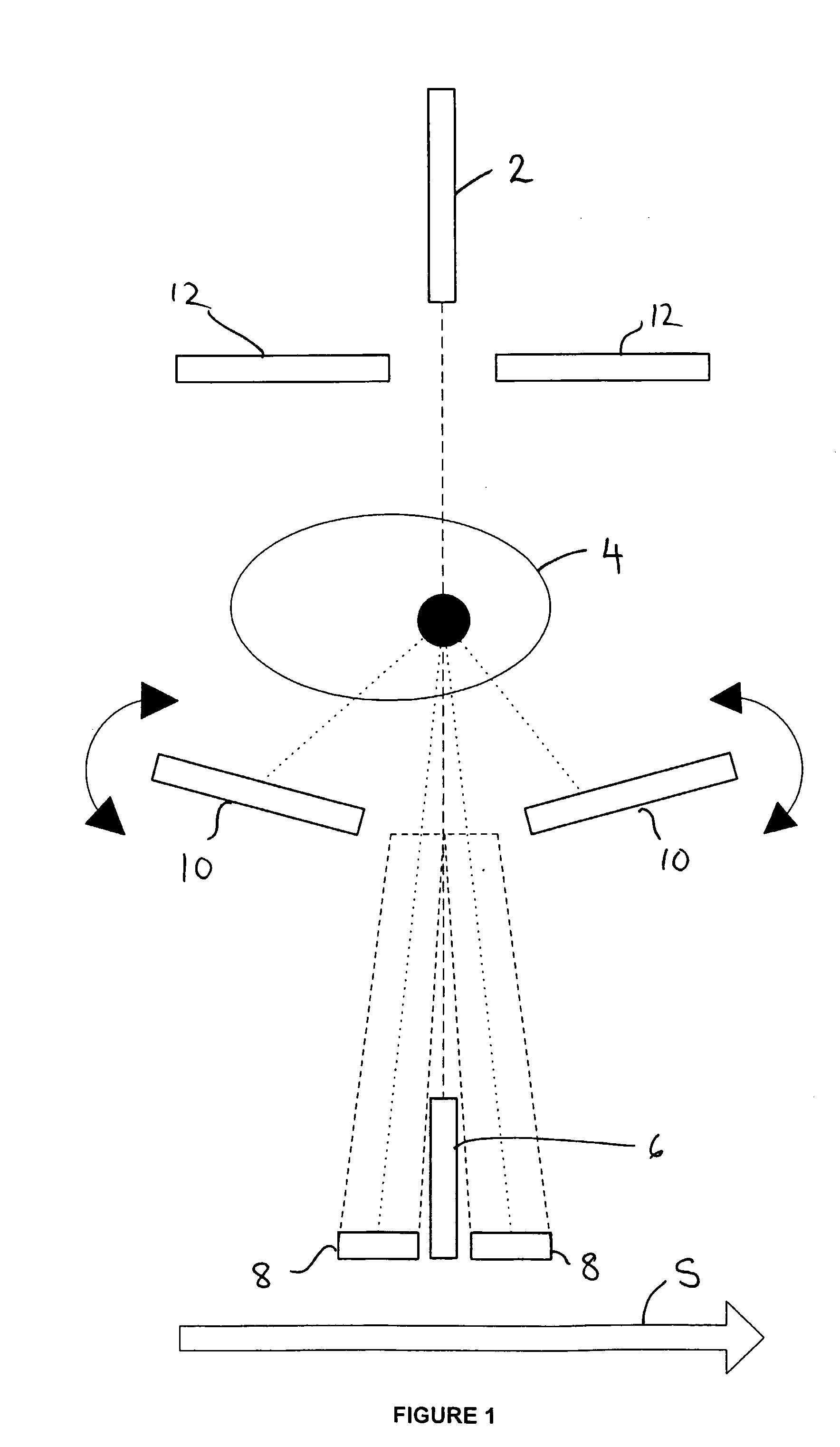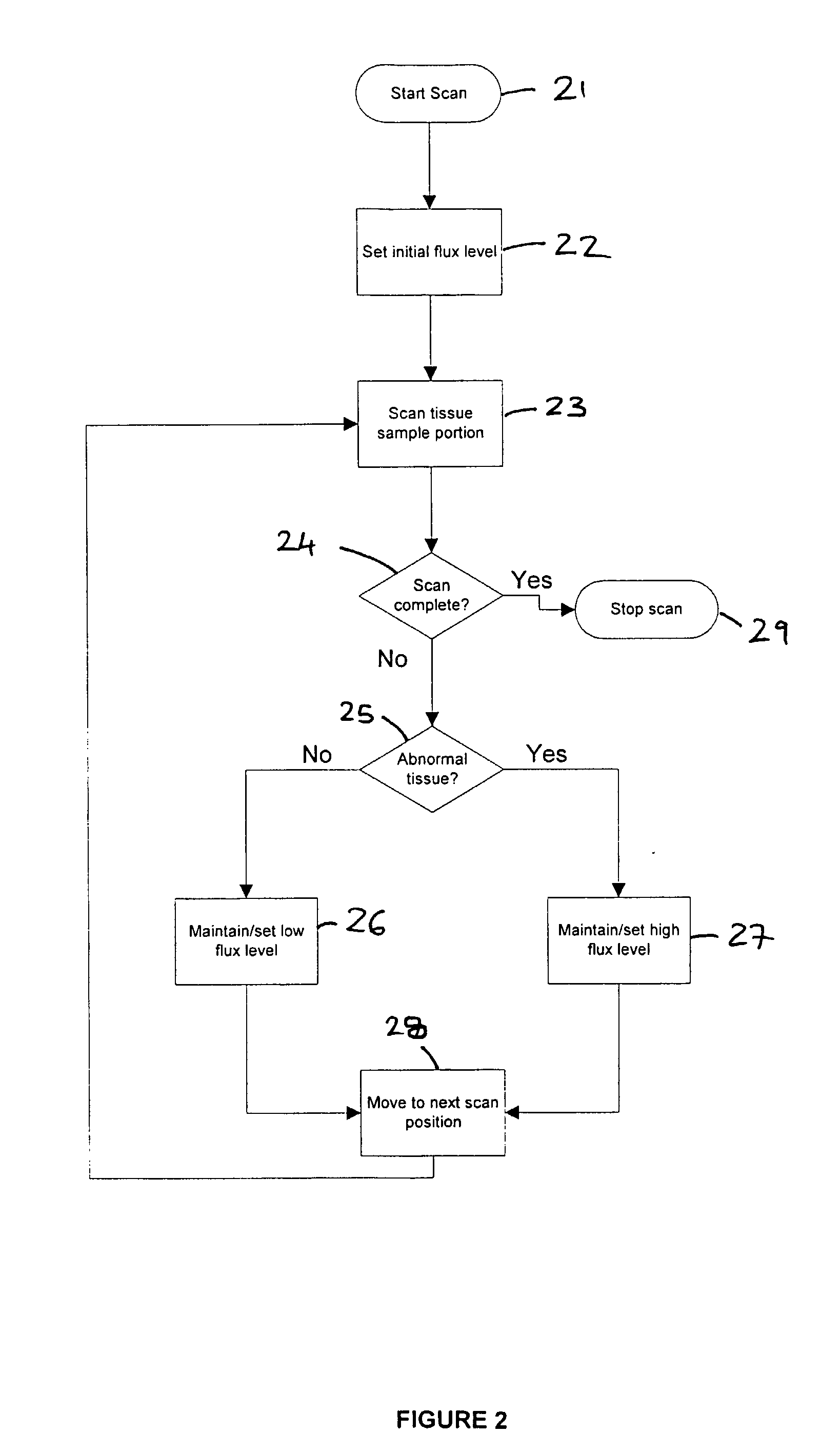Method and Apparatus for Irradiating Body Tissue
a body tissue and irradiation technology, applied in biochemistry apparatus, biochemistry apparatus and processes, diagnostics, etc., can solve the problems of increasing the likelihood of long-lasting serious damage, increasing the likelihood of cancer, and molecular damage to the tissue, so as to increase the information content
- Summary
- Abstract
- Description
- Claims
- Application Information
AI Technical Summary
Benefits of technology
Problems solved by technology
Method used
Image
Examples
Embodiment Construction
[0045]FIG. 1 illustrates and apparatus suitable for in vivo irradiation of a tissue sample (e.g. a breast). The apparatus comprises a penetrating radiation (in this example X-ray) beam source 2 that directs a beam of X-ray radiation onto the tissue sample 4 being examined. A series of detectors 6, 8, 10, 12 are arranged below and above the sample 4 to detect both transmitted and scattered X-ray radiation.
[0046]A more detailed explanation of the source and detector arrangement is given in our co-pending UK patent application filed on the same date as the present application with the title “Penetrating Radiation Measurements”.
[0047]In use, the source and detector arrangement is scanned across the full length of the tissue sample (e.g. breast), as indicated by arrow ‘S’, whilst the sample is held stationary. The scan is completed in step-wise fashion, with measurements being taken from the detectors at each step.
[0048]The incident beam can be a slit-form beam having a width (into the p...
PUM
 Login to View More
Login to View More Abstract
Description
Claims
Application Information
 Login to View More
Login to View More - R&D
- Intellectual Property
- Life Sciences
- Materials
- Tech Scout
- Unparalleled Data Quality
- Higher Quality Content
- 60% Fewer Hallucinations
Browse by: Latest US Patents, China's latest patents, Technical Efficacy Thesaurus, Application Domain, Technology Topic, Popular Technical Reports.
© 2025 PatSnap. All rights reserved.Legal|Privacy policy|Modern Slavery Act Transparency Statement|Sitemap|About US| Contact US: help@patsnap.com



